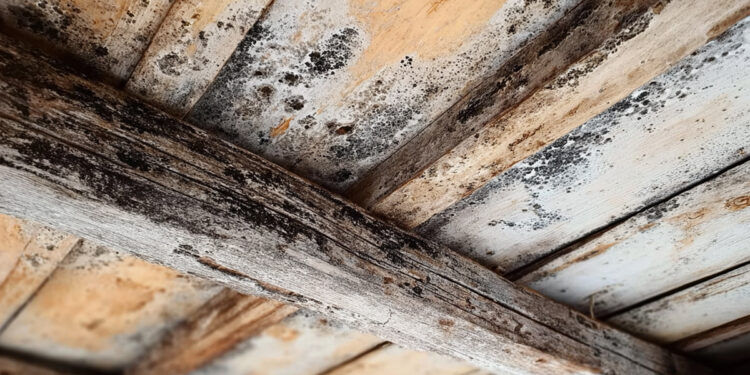Breathe Easy: A Practical Guide to Improving Your Home’s Ventilation

In the pursuit of creating a beautiful and comfortable home, we often focus on the visible elements: the colour palette, the furniture, the soft furnishings. Yet, one of the most critical components of a healthy and pleasant living environment is entirely invisible—the quality of our indoor air. With Britons spending an estimated 90% of their time indoors, ensuring our homes are well-ventilated is not just a matter of comfort, but of health and structural integrity, especially in our often-damp Yorkshire climate.
Poor ventilation can lead to a host of problems, from condensation streaming down windows on a cold morning to the more sinister growth of black mould on walls and ceilings. It can exacerbate allergies and asthma, damage possessions, and create that unmistakable “stuffy” feeling. The good news is that with a few strategic upgrades and changes, you can significantly improve your home’s air quality, creating a fresher, healthier, and more energy-efficient space.
Understanding the Enemy: Condensation and Mould
Before diving into solutions, it’s helpful to understand the primary cause of most UK indoor air quality issues: excess moisture. The average family produces a surprising amount of water vapour daily through cooking, showering, drying clothes, and even breathing. When this warm, moist air meets a cold surface—like a window pane or an uninsulated external wall—it condenses into water droplets. This damp environment is the perfect breeding ground for mould spores and dust mites, the most common triggers for respiratory problems and allergies.
The Three-Tiered Approach to Better Ventilation
Tackling home ventilation effectively requires a layered strategy, from simple behavioural changes to more involved mechanical solutions.
Tier 1: Natural Ventilation and Lifestyle Adjustments
These are the no-cost and low-cost steps every homeowner can take immediately.
- Master the “Trickle Vent”: If your windows have them, use the trickle vents. These small, adjustable openings at the top of the window frame provide a constant background level of ventilation without creating a draught or compromising security.
- Create Cross-Ventilation: When weather permits, open windows on opposite sides of the house for short, intense bursts of 10-15 minutes. This is far more effective at replacing stale air than leaving a single window open all day.
- Ventilate at Source: Make it a habit to open a window or turn on an extractor fan during and after moisture-producing activities. Always cook with your kitchen extractor hood on and keep the bathroom door closed during and after a shower to contain the steam.
- Dry Clothes Wisely: Avoid drying clothes on radiators indoors if possible, as this releases litres of water into your air. If you must dry clothes inside, do so in a well-ventilated room with the door closed.
Tier 2: Spot Ventilation with Effective Extractor Fans
While opening a window is effective, it’s not always practical, especially in the middle of winter or in rooms without windows. This is where mechanical extractor fans become essential. They are designed to remove moisture and pollutants right at the source, in the two most critical rooms: the kitchen and the bathroom.
A common mistake is installing an underpowered fan. Look for fans rated by their extraction rate, measured in litres per second (l/s). Building Regulations currently recommend a minimum of 15 l/s for a bathroom and 30 l/s for a kitchen, but more powerful is often better, especially in larger rooms.
For bathrooms, the choice of fan type is crucial. A standard wall-mounted fan is common, but for many homes, a ceiling extractor fan in bathroom offers a superior solution. Ceiling-mounted models can be ducted directly upwards and out through the roof, which is often a more efficient and shorter ducting run than through a wall, especially in upstairs bathrooms. This can lead to better extraction performance and quieter operation. Many modern ceiling fans also come with intelligent features like humidity sensors that automatically turn the fan on when moisture levels rise and off again when the air is clear, ensuring you never forget to ventilate.
Tier 3: Whole-House Solutions
For those undertaking major renovations or building a new home, considering a whole-house ventilation system is the ultimate upgrade. The gold standard is Mechanical Ventilation with Heat Recovery (MVHR).
An MVHR system is a balanced system that works continuously. It extracts stale, moist air from “wet” rooms (kitchens, bathrooms) and supplies fresh, filtered air to “dry” rooms (living rooms, bedrooms). The genius lies in the heat exchanger, which transfers the heat from the outgoing stale air to the incoming fresh, cold air from outside. The result is a home that is constantly filled with fresh, allergen-filtered, pre-warmed air, with condensation and mould problems eliminated and heating bills significantly reduced.
Making the Right Choice for Your Yorkshire Home
The best ventilation strategy for you depends on your home’s age, layout, and your budget. A period cottage will have different needs and challenges compared to a modern, airtight new-build.
- For Older, Draughty Homes: Focus on improving spot ventilation in the kitchen and bathroom. Ensure your extractor fans are powerful enough and actually vent to the outside, not just into the loft space, which can cause serious structural damage.
- For Modern, Airtight Homes: These homes are designed to minimise heat loss, which also traps moisture inside. Here, background ventilation is critical. Trickle vents, high-performance extractor fans, or even a Positive Input Ventilation (PIV) system, which gently pressurises the home with fresh air, can be very effective.
- For Renovations and New Builds: This is the ideal time to plan for a whole-house MVHR system. While the upfront cost is higher, the long-term benefits for health, comfort, and energy savings are substantial.
Improving your home’s ventilation is one of the most impactful upgrades you can make. It protects the very fabric of your building, safeguards your health, and enhances daily comfort. By taking a proactive approach, you can ensure your home is not just a beautiful space to live in, but a truly healthy one.










